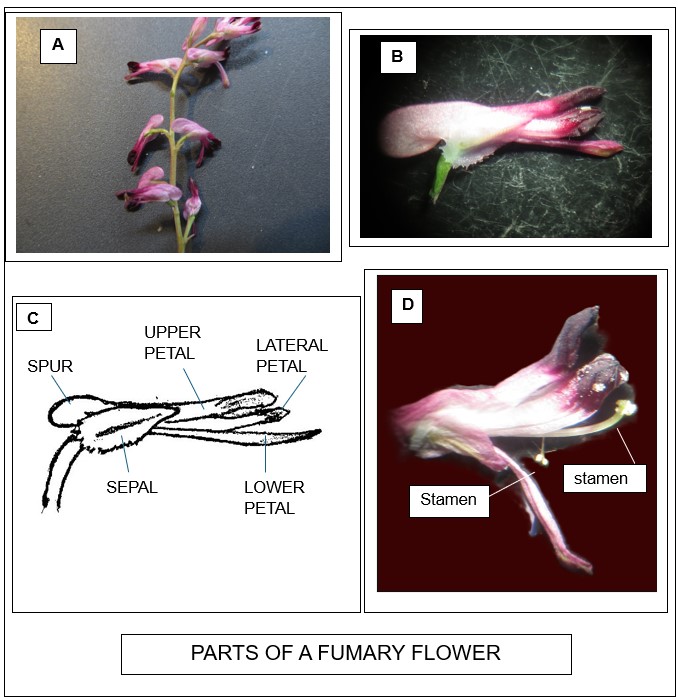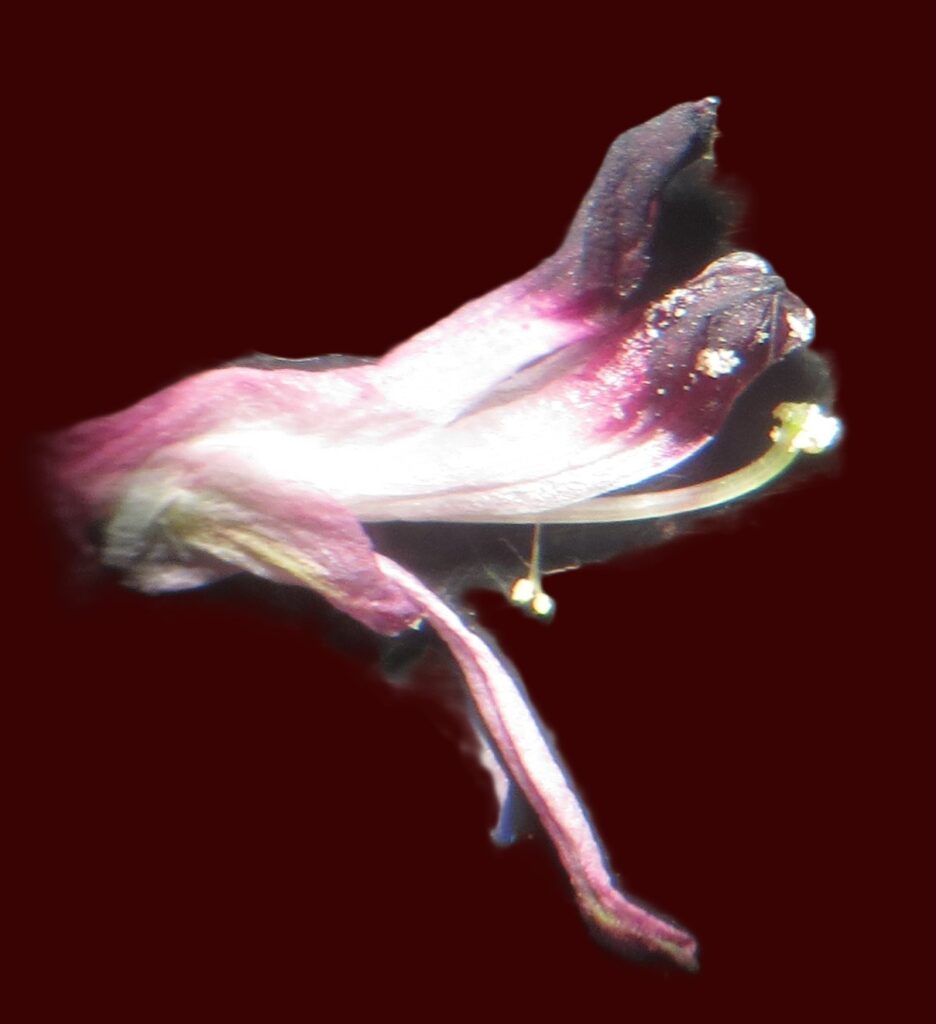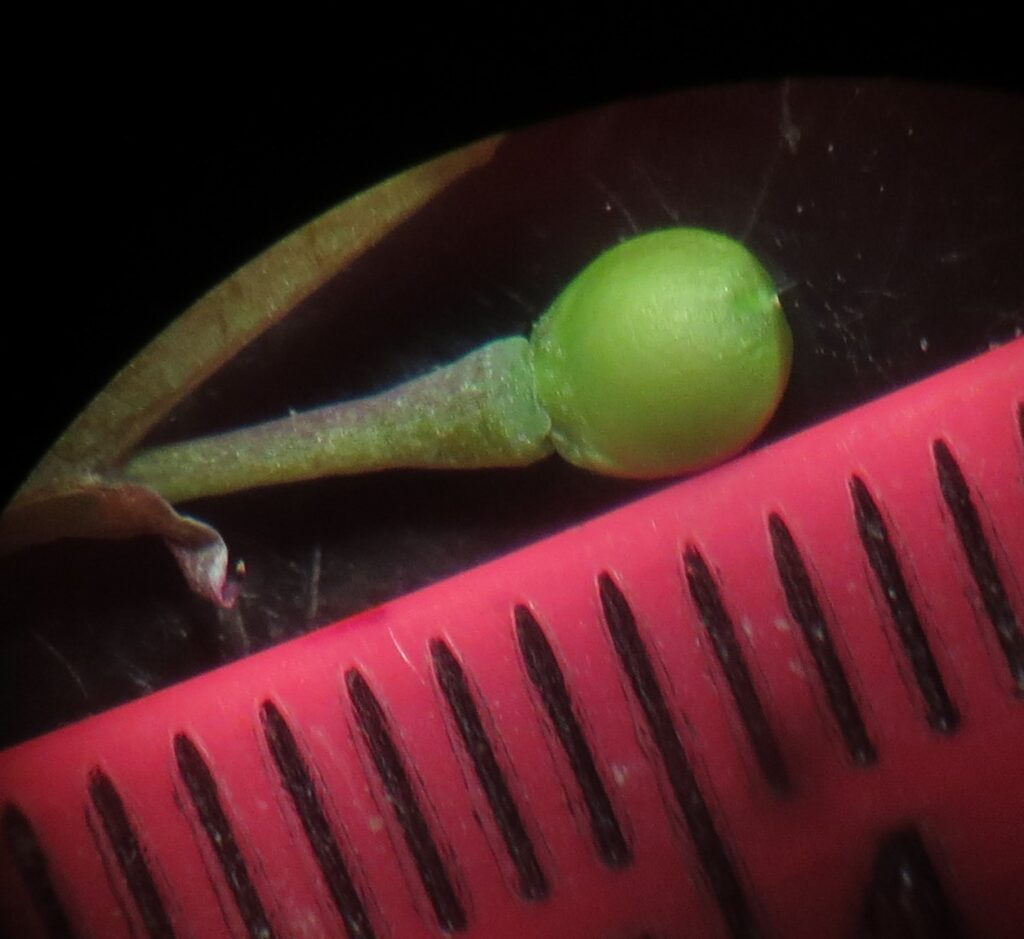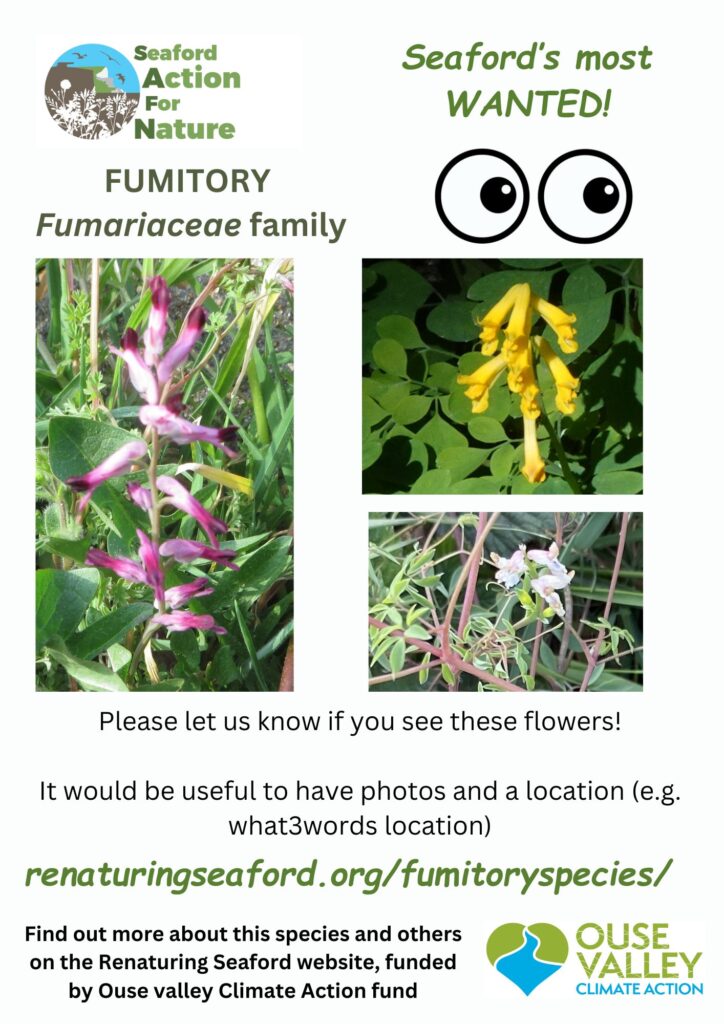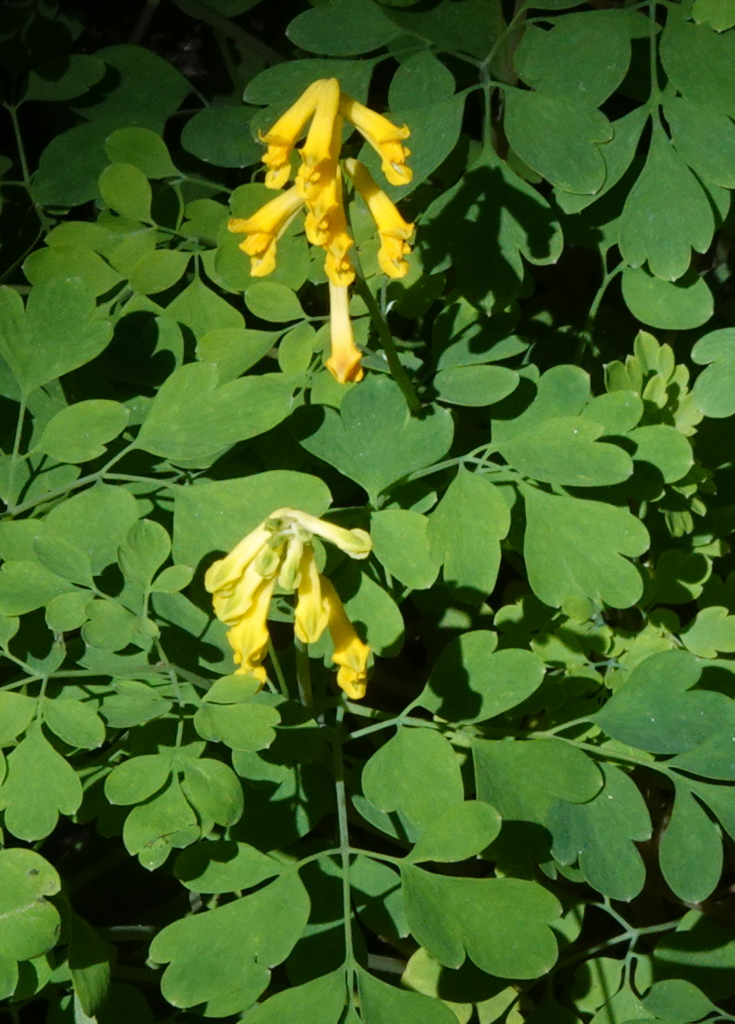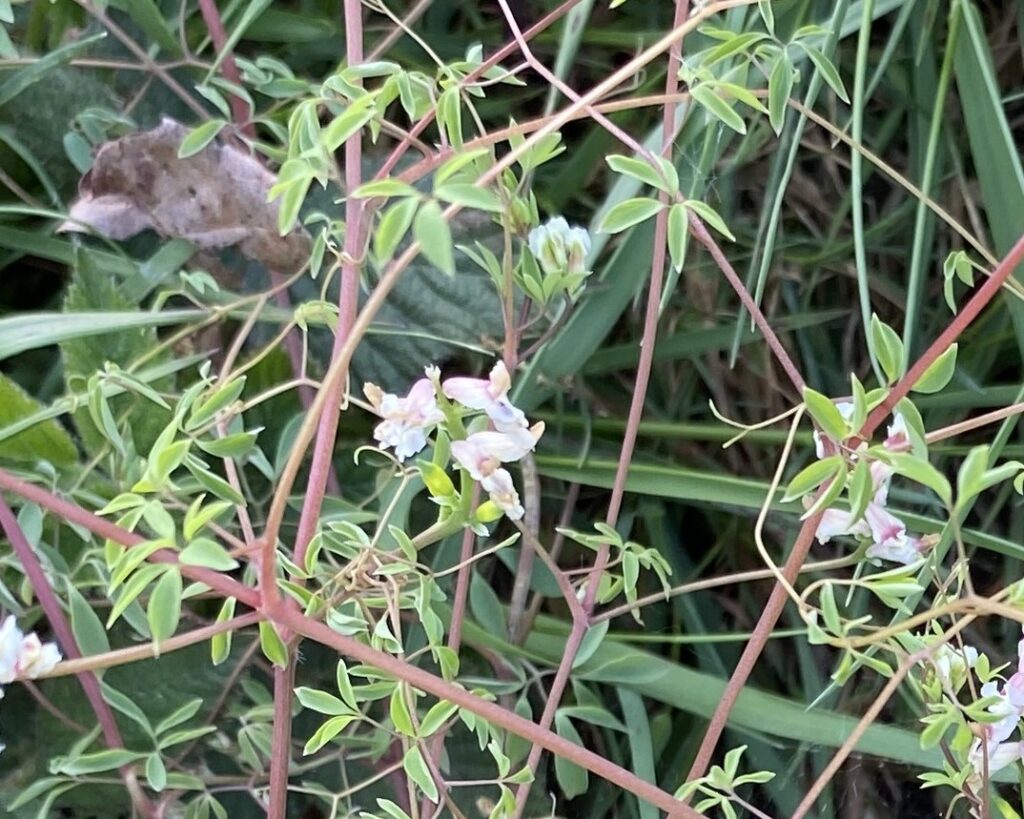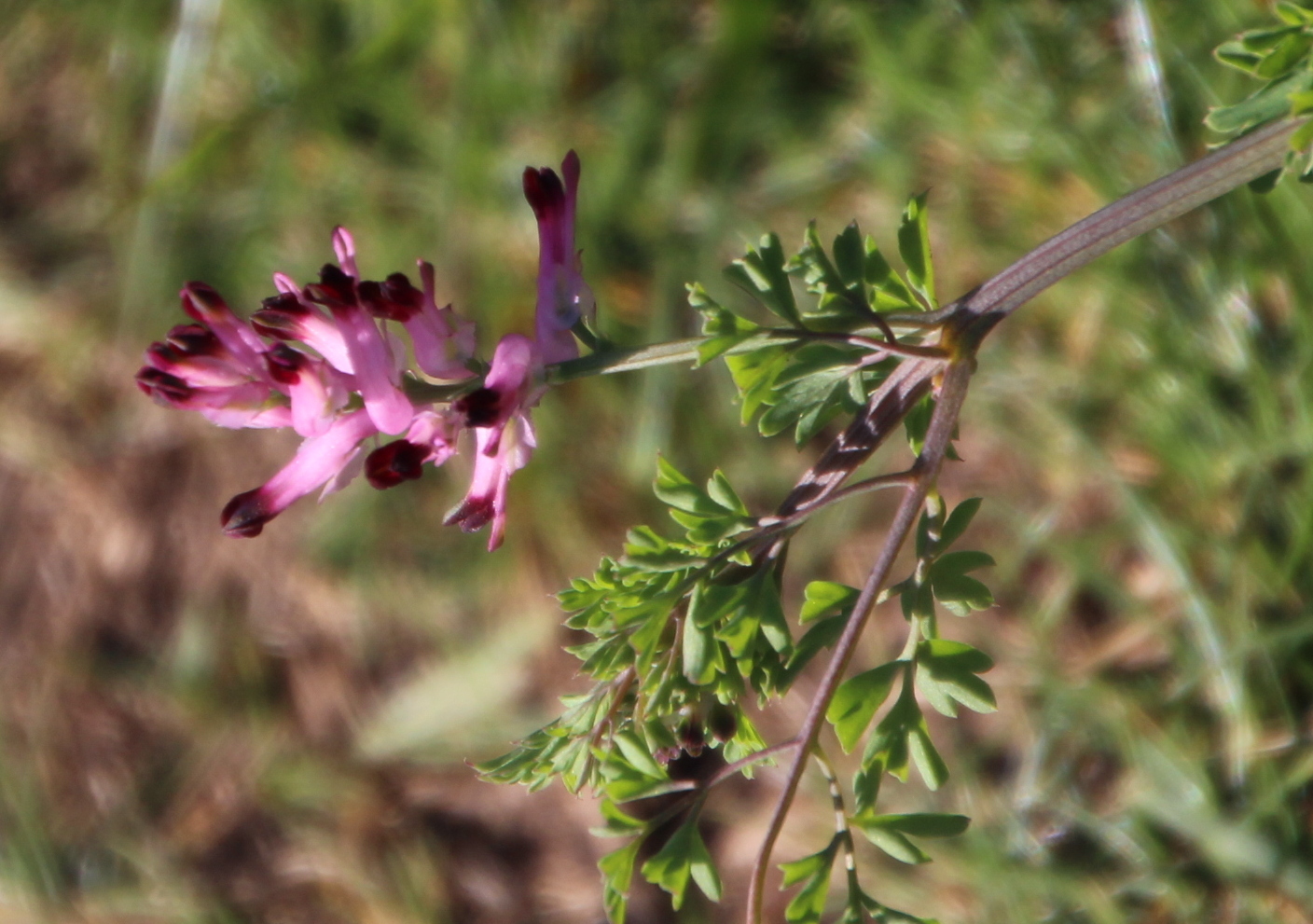Brian tells us more about these pretty little flowers, and asks people in Seaford to let us know where they are spotted!
Introduction to Fumitory family
The “Flora of Sussex” divides the county O.S. map into multiple squares for the purposes of recording. The one containing Seaford is mostly sea with the town in the top right corner.[1]
Two species in the plant family “Fumitory” are recorded here but they are not abundant and well worth seeking out. One is a truly native plant in British Isles. This is the Common Ramping Fumitory, Fumaria muralis. (fig.1)
The other is the Common Fumitory, Fumaria officinalis. This was introduced from continental Europe centuries ago and is classed as an “Archeophyte” i.e. it has been naturalised here since before the year 1500 BCE. The two species look quite similar.
We have seen either this one or the Common Fumitory in three sites around town but it should be more frequent than that. So, if you see one, please let me know. (email Brian at livingstone484@btinternet.com)
Flower details
Separating the two species is tricky and involves the use of a key. Not the least of the difficulties is keeping the book open at the right page while you try and measure flower lengths, especially if you use Rose or Collins guides. We have tabulated the differences between the two of them, below
Look at Figure 2. Fumitory flowers are quite difficult dissect to show their structure.
The flower is a more or less horizontal tube of 4 elongated petals and a backwards extending spur.
2A Fumitory flowers “go off” quite quickly. Any assessments and measurements need to be made before they begin to dry out and shrink. Also, all authorities advise that you only assess flowers that have been growing in good light and are not beginning to go over. The inflorescence in 2A is already past its best when compared with fig. 1B
2B shows a single flower and 2C is a sketch-diagram. There are 4 elongated petals. The upper one extends out backwards as a “spur” The lower petal extends forwards like a tongue. These two petals partly encase the two lateral petals. There are only two sepals, one each side, and 2B shows one. It is pointed at the tip and rounded at the back or base with a finely toothed margin. On the photo 2B it does not contrast much with the petals because it is the same colour, but you can see its keel, pointed tip and toothed margin See also Fig 2B enlarged
There are three stamens in the flower and they are loosely stuck together.
2D shows the flower with the petals pulled apart with the thickest of the stamens now protruding. One of the two much more slender stames is hanging down from the petals. There is no elongated pistil from the ovary because the stamens self pollinate it without the flower normally opening. Insects are not usually involved although the flowers produce nectar so presumably very small ones are attracted to creep inside.
The bulge at the flower base in Fig. 2D where the petals all join, covers the single seeded fruit.(see below).
As noted, these pictures show the Common Ramping Fumitory Fumaria muralis. It is only occasional in West Sussex but frequent here in East Sussex and should be quite common around Seaford. However, we have only found it in a few places, so any reports of sightings would be welcome.
The Common Fumitory F. officinalis is indeed the commonest Fumitory in Sussex. It has been recorded in Seaford but we have not found it here yet. So please look out for it. It doesn’t matter if your i/d is incorrect We want to know about all fumitories in the town.
Differences between the two main species
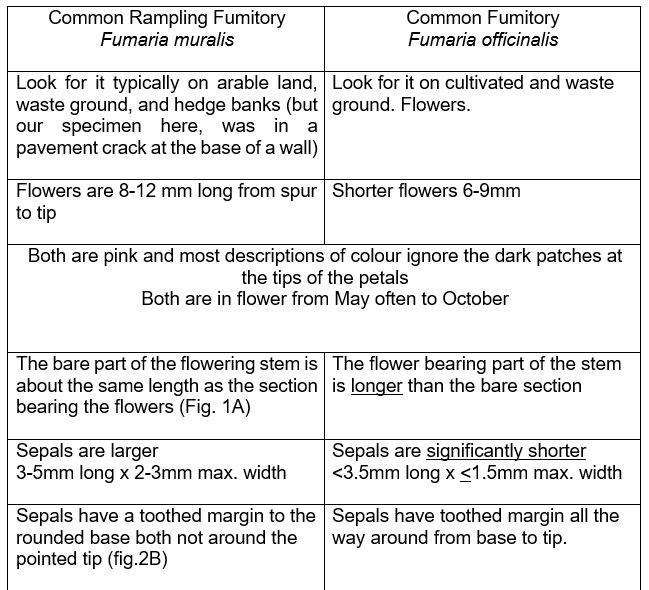

Other Plants in the Fumitory Family around Seaford.
The Corydalis group
The Yellow Corydalis, Pseudofumaria lutea (fig 4) is basically a garden plant which escapes quite easily. It is rated as very common over the garden wall but we only have one sighting locally, on the North-West edge of town, so please look out for it.
It is a stout perennial plant with bright yellow fumitory-like flowers that are usually longer than the two Fumitories just described. Look for it on older walls stony ground between May and August.
There is also a British Isles native Corydalis species, the Climbing Corydalis, Ceratocapnos claviculata. (Fig.5)
This is a scarce plant in East Sussex but has been recorded just North of Seaford. Try along the tracks beyond the Golf Club, looking in open woodland or wood margins where the soil is sandy. We shall go ourselves but if you see it, let us know. The white flowers are only about 5-6mm long. The clincher is the presence of tendrils and each fruit has three seeds instead of Fumaria’s one. In flower May to September, so there is lots of time.
You can contact me by email below (or send sightings via the contact form on this website)
You can find out more interesting facts about the names for this family here!
Brian Livingstone (livingstone484@btinternet.com)

